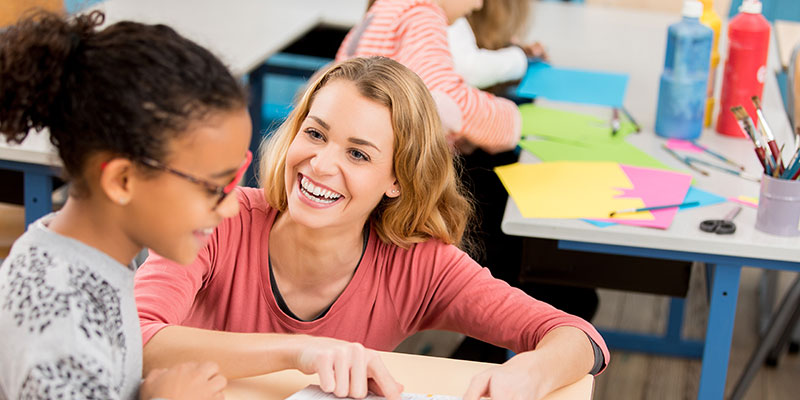Mentorship can be beneficial in all areas of life, including career mentors, spiritual advisors, and more. Many schools and educators have been implementing special types of mentoring programs in the classroom: cross-age peer mentoring (aka buddy programs!). Younger kids have always looked up to older kids. While adulthood may seem so far away, a student a couple of years older can give a child a standard to aim for in the short term.
Licensed Marriage and Family Therapist Emily Sanders explains, “we all tend to gravitate towards those who are stronger, more knowledgeable, or already have a following because it symbolizes safety and acceptance. There’s a natural assumption that those who are older are more knowledgeable or are ‘cool.’ If the younger child can win the favor of the older child then the younger child can receive praise, safety, access to big kid stuff, etc.”
Cross-age peer mentoring programs match older youth (mentors) with younger students (mentees) for the purpose of guiding and supporting the mentees in many areas of their academic, social, and emotional development. These programs often happen within the classroom, where a younger grade level teacher hosts an older class.
What are the benefits of cross-age peer mentoring?
For mentees, studies have shown the positive outcomes on:
- Connectedness to school and peers
- Feelings of competency and self-efficacy
- Grades and academic achievement
- Prosocial behavior and attitudes
For mentors, there have been reported improvements on:
- Connectedness in school
- Self-esteem
- Empathy and moral reasoning
- Intrapersonal communication and conflict resolution skills
Ozobot Certified Educator Stefanie Pechan’s fifth graders are in a buddy program with a second grade class at her school. Twice per week, her classroom mentors their second grade buddies on lessons the younger students need to practice on, such as math concepts.
“Kids teaching kids is sometimes the best way to reach those struggling with academics. Some that shut down due to frustration may just give it another try for their Big Buddy. For the older kiddos, reteaching concepts strengthens their own understanding. They have to also work on presentation skills and be clear in their instructions to their Little Buddies. It also frees them up to play, as they did when they were younger.”
Tenth grade English Teacher Gina Ligouri worked mentorship into one of her lessons, an Ozobot-powered creative writing project which culminated with students guiding third graders through a creative coding project of their own!
“Six sophomore students,” she said, “spent a day with a third grade class at our elementary school sharing their knowledge on Ozobots. The sophomores taught the third graders not only how to code the Ozobots, but the main elements of plot within a story… Once they completed their project, the third grade class brought their story boards to the high school to share with our group of ‘Ozobot experts’—as they nicknamed the sophomores.”
Below, you’ll find some easy-to-implement tips for bringing programs like these into your classroom.
How to create a peer mentoring program:
Establishing a cross-age mentoring program doesn’t have to be difficult. Each teacher and classroom will have different needs and so each program will vary.
Here are three small steps to get started, per Leaderinme.org:
- Start simple. Something such as “reading buddies” where an older class reads books or does a craft with a young class can be a great start. This time can aid children in their reading skills while increasing their confidence in their abilities.
- High achievers as mentors. People love to be asked to share their knowledge with others, so the idea of using high achievers as peer mentors is a wonderful idea! We want our children to feel valued and important. Giving younger children access to older children not only helps the younger ones but also provides the older students with leadership opportunities.
- Create a safe space. Creating safe places for mentors and mentees to meet and talk is essential for their comfort as they maneuver their way through these awkward years.
A supportive mentorship program will benefit the entire school by connecting diverse groups of students. These connections will generate good feelings throughout the school common areas, give younger kids relevant role models that are not adults or relatives, and instill older kids with leadership skills.









